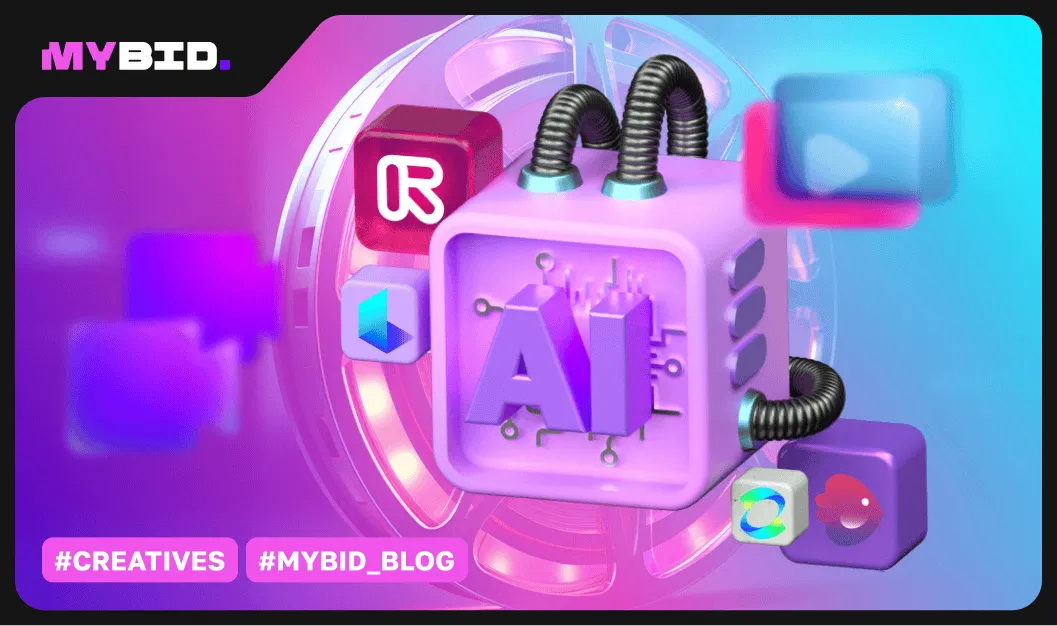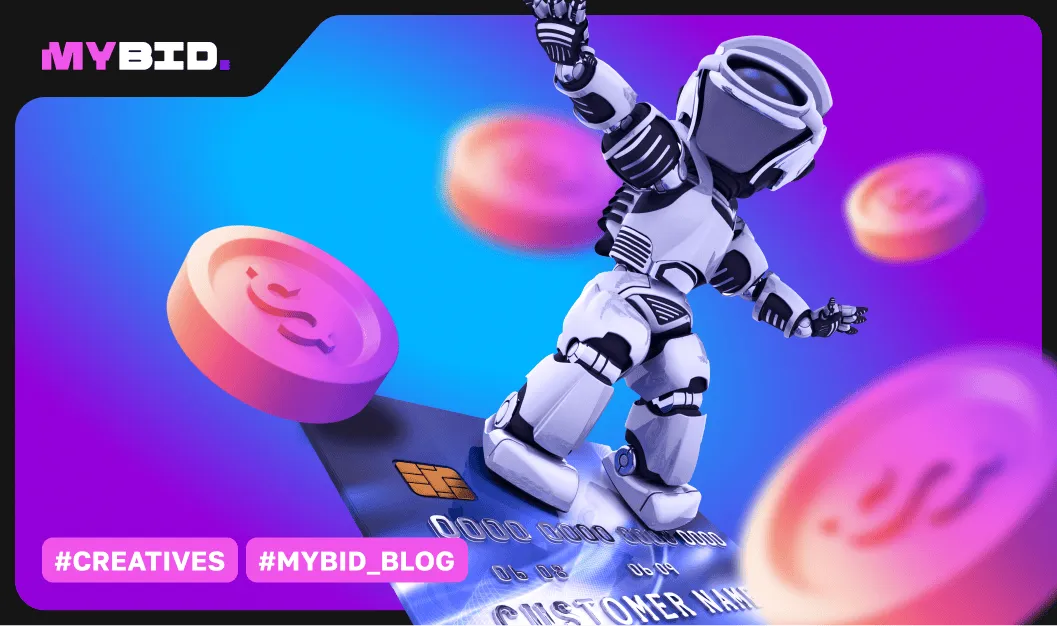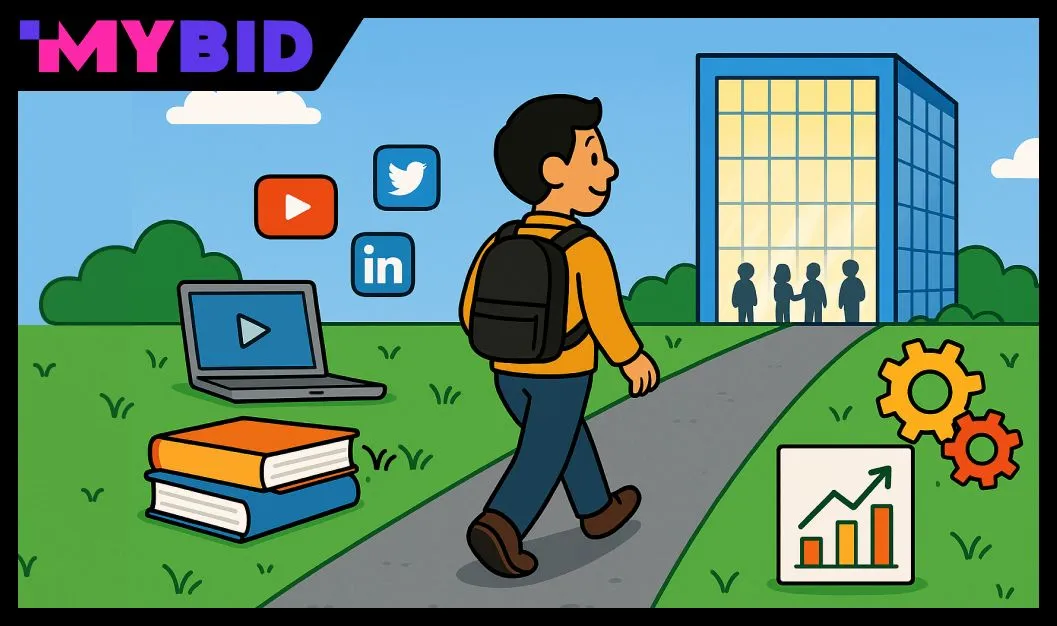Over the past few years, AI (artificial intelligence) has become a bigger part of our daily lives. As a result, things that used to seem superficial or unusual are now normal and common. These days, it's not surprising to talk to a chatbot or voice assistant that can engage in a thoughtful conversation or to see an image generated based on a text description.
Let's explore what AI is, what kinds of problems it can help solve, and how we might create something to compete with the popular AI system called ChatGPT.
What is artificial intelligence?
There are lots of ways to define artificial intelligence (AI) these days, but they all boil down to this — it's the ability of a computer or other machine to handle tasks that would normally need human intelligence. What we're talking about here is things like:
- Understanding and interpreting the context of a situation
- Learning from experience
- Analyzing information and data in order to give responses that seem very human-like
The key idea is that AI allows machines to do things that we usually think of as requiring human-level thinking and problem-solving skills.

This is how AI sees itself in one of the generative AI tools
These human-level thinking and problem-solving skills are achieved through a few main technologies:
- Machine learning: The ability of a program to learn from data on its own, without using pre-programmed instructions. To get good results, huge datasets are needed to identify patterns and trends that can be used to make predictions. For example, being able to recognize and distinguish birds in images.
- Deep learning: A more advanced form of machine learning that processes data and information through multiple layers and connections. This allows AI to not just find a bird, but determine its species based on details like its beak, feathers, and color.
- Natural language processing: The ability of a program to understand human language and interact with people. AI learns to recognize words, sentences, and larger language structures, and then respond appropriately.
These three core components work together to create artificial intelligence that mimics the functioning of the human brain – taking in information, interpreting it, and providing intelligent responses.
How and for what tasks can artificial intelligence be used?
Some of the most common uses of AI that have become widespread in everyday life are voice assistants like Siri or Alexa. These can tell you the weather, set alarms, remind you of appointments, and handle lots of other everyday tasks. These kinds of AI assistants are now taken for granted.

AI market growth forecast in millions of dollars until 2030 from Statista
But AI is capable of much more than that. There are powerful AI tools like ChatGPT that can do all kinds of things in one interface – have informed conversations, write code, translate texts, provide expert knowledge, explain complex topics, and generate content. However, there are only a few such versatile AI solutions on the market right now.
More specialized AI tools have also emerged for specific tasks, like:
- Image generation: There are tools that can generate images based on text descriptions. The user writes what they want the output to be, and the AI draws it. This technology is getting better all the time, allowing things like removing objects from images, changing backgrounds, adding realism or cartoon-like effects, and so on. But AI still struggles with things like rendering realistic-looking hands, which are one of the most complex and varied parts of the human body.
- Logo creation: These AI tools ask the user some questions about their business, target audience, and design preferences. Then they create a selection of draft logo options for the user to choose from. Based on the chosen drafts, the AI will generate several final logo designs.
- Book Writing: AI uses complex "story generator" algorithms that take an author's existing writing as a starting point and expand it into longer stories. These can help writers when they get stuck and don't know what to write next.
- Audio/Video Transcription: You can import an audio or video file, and the AI will transcribe it into text using speech recognition. You can then edit the text, and the changes will be exported back to the original file.
- Business analytics: In addition to analyzing large amounts of data, AI can also help with business decision-making. If a user has questions or doubts about things like marketing, new technology, office changes, career choices, or choosing suppliers, these AI tools can provide guidance.
Beyond these useful applications, there are also some more ethically questionable uses of AI, like digitally undressing people in photos or creating fake digital documents that are hard to distinguish from the original. But the responsibility for using those kinds of services lies with the people choosing to use them.
Best Chat GPT Alternatives
ChatGPT is a very popular and capable AI assistant that was created by a company called OpenAI. They released it to the public in late November 2022. Thanks to its wide range of abilities, ChatGPT quickly became a big hit.
Nowadays, ChatGPT has around 180 million users. But its huge popularity also means it can sometimes be unavailable due to all the people trying to use it at the same time. Plus, ChatGPT is restricted or blocked in certain countries like China, Russia, and a few others. To use the latest version of ChatGPT, you also have to pay for one of their subscription plans.
So there are a few good reasons why people might want to look for alternatives to ChatGPT. Luckily, there are plenty of other AI assistant options out there, even if many of them don't have quite as many features as ChatGPT. We'll go over some of the most popular ChatGPT alternatives and talk about what they can do and where you can use them.
HuggingChat
HuggingChat is one of the closest alternatives to ChatGPT, and it's a free and open-source web application developed by a company called Hugging Face. The main goal for the creators of HuggingChat is to "make the best AI models available to everyone."

HuggingChat is essentially a chatbot, similar to ChatGPT, where you can ask it questions, get it to generate text, write code, find information, and explore different topics. It uses 9 different large language models that you can switch between right in the interface. The default model is called Command R+ and it was actually the first one to beat ChatGPT in a competition.
The training data for HuggingChat comes from an open-source AI assistant called OpenAssistant, as well as a community of programmers, researchers, and enthusiasts.
For tasks like generating and understanding different kinds of text, HuggingChat is one of the best options out there. But that's really its main focus – for other tasks like image generation, you'd need to use a different service.
Gemini
Gemini is Google's alternative to ChatGPT. It can help you write text, write computer code, plan a trip, and explain things you don't understand in over 40 different languages. The answers Gemini provides are based on information it already knows or gets from other Google services.
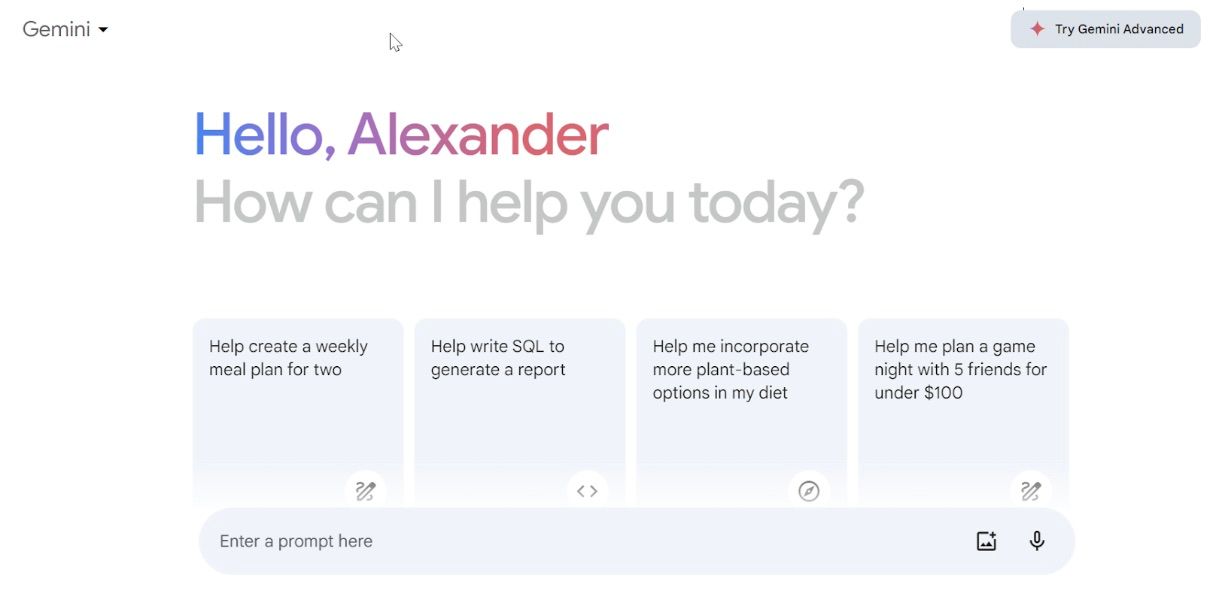
One key difference from ChatGPT is that Google's Gemini AI doesn't remember the context of your conversation with it, and it can't generate images – at least not yet. But Google says they're working on improving those capabilities over time.
Gemini has an "Advanced" version that you can use for free for the first two months. This runs on Google's most powerful AI models, and its features and functionality are constantly expanding. Some of the things Gemini's Advanced version can do right now include:
- Uploading documents and generating summaries of them
- Modifying and running code in the Python programming language directly within the Gemini service
- Integrating with and using AI capabilities from other Google services
So in a lot of ways, Gemini is Google's answer to ChatGPT, with some unique features and capabilities of its own.
Stability AI
Stability AI is a company that develops a wide range of artificial intelligence technologies. Their main goal is to create open-source AI products that can help unlock human potential in various ways. This includes generating images and videos based on text descriptions, as well as advancements in areas like language processing, biology, and audio data processing.
One key difference from ChatGPT is that Stability AI provides free and unrestricted access to their AI services and models, rather than having paid tiers or content restrictions.
One of their products is called Stable Video, which allows you to create short videos just by entering a text description. You can find the code for Stable Video in online repositories like HuggingFace and GitHub, but you'll need powerful computer hardware to run it yourself. For those without that kind of hardware, Stability AI launched a Stable Video website in late 2023 where you can test out the text-to-video capabilities online.
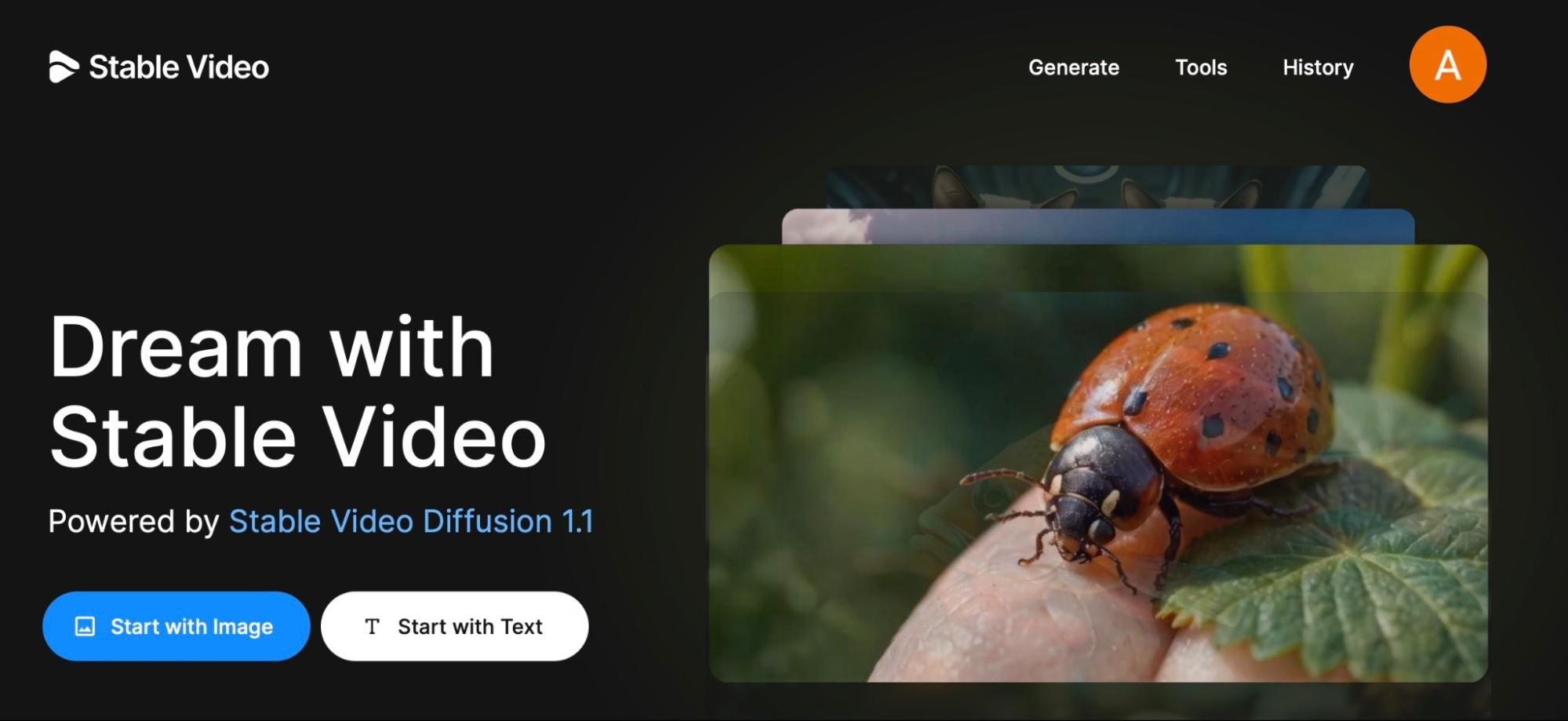
They also have a similar service called Stable Diffusion 3 that can generate and edit images based on text inputs. This uses Stability AI's latest and most advanced generative AI model.
Most recently, Stability AI added a platform called Stable Audio that can process audio files. Users just need to fill out a form or upload a sample, and then describe what they want the AI to do with the audio.
Jasper AI
Jasper specializes in AI tools for marketing and writing, allowing users to generate titles and text content for free. However, for longer or more advanced content creation, a subscription is required.
In February 2024, Jasper announced the acquisition of the ClipDrop image processing platform from Stability AI. This expanded Jasper's functionality to include a wide range of AI-powered image creation and editing capabilities, which were previously only available in ChatGPT-4 the paid version of ChatGPT.
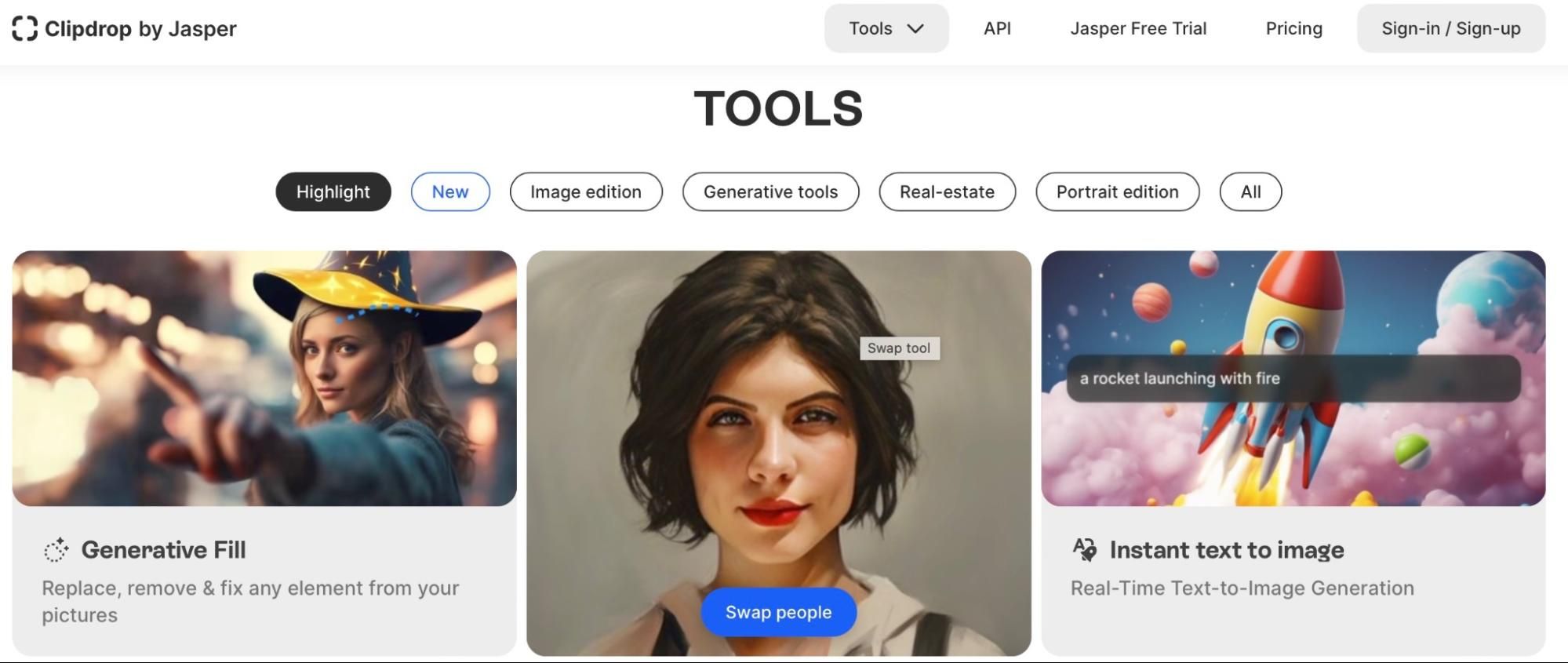
Some of the key image tools Jasper now offers include:
- Generative Fill – This lets you replace, remove, or fix different elements within an image.
- Face Swap – You can swap out the faces in an image, putting one person's face on another person's body.
- Text to Image – Jasper can generate completely new images just from text descriptions.
- Background Removal/Replacement – You can change or remove the background of an image.
- CleanUp – This tool can remove objects, people, defects, or text from an image.
- Uncrop – Jasper can expand an image by adding new background elements or body parts.
- Image Upscaler – This improves the clarity, resolution, and quality of an image, and can remove visual noise.
- Sketch to Image – Jasper can turn simple sketches into fully fleshed-out images.
- Reimagine XL – This generates multiple variations of the same image.
The advantage of these tools is that they are very easy to use – you just need to drag an image into the tool and indicate what you want it to do, without requiring advanced technical skills. This makes Jasper a compelling all-in-one platform for content creation, marketing, and image editing.
WriteSonic
WriteSonic is an AI-powered content creation and optimization platform that is often cited as an alternative to ChatGPT. The main focus of WriteSonic is to help users create high-quality, SEO-friendly content.

Some of the key features WriteSonic offers include:
- Generating written content on any topic by analyzing competitor information and other research sources. The content is populated with relevant links and quotes to help it rank better in search engines.
- Real-time SEO optimization with suggestions and tips to make the content more search engine friendly.
- An integrated chat function that lets you get answers to questions or clarification on passages of text.
- Summarizing and rephrasing long blocks of text.
- Other useful features like text-to-speech voiceovers, fact-checking, and a plagiarism checker – ChatGPT does not currently have these.
When you first sign up for WriteSonic, you get 25 free "tokens" to use on the platform. After that, the service has subscription plans starting at $15 per month.
The main draw of WriteSonic is that it provides a one-stop-shop for creating, optimizing, and promoting high-performing content, with the help of advanced AI capabilities. This makes it an attractive alternative to ChatGPT for users focused on content marketing and SEO.
Tome
Tome is an AI-powered presentation creation tool. The basic idea is really simple – you just pick a template and tell Tome the topic you want to make a presentation about. Then Tome's algorithms will do the rest of the work for you.
Tome's AI will analyze the market and put together the research and content you need for the presentation. This includes not just written content, but also images and videos.
There are a few different subscription options:
- A trial plan that gives you 500 credits, with each slide costing 5 credits. This lets you do some manual editing.
- A "Professional" plan for $16 per month that unlocks advanced features like design tools, analytics, and the ability to download your presentations.
- A "Corporate" plan with fully customizable options, but the price for this one is negotiable.
You can interact with Tome in all kinds of ways – create individual slides, full presentations, tables, videos, photos, text, and so on. Just tell Tome the topic and it'll provide an outline to get you started. This is all done via chat, just like on ChatGPT.
One potential downside is that the AI-generated images don't always perfectly match the written content. But overall, Tome makes it super easy to create polished, data-driven presentations without having to do all the work yourself.
Rytr
Rytr is another AI-powered writing assistant that's often compared to ChatGPT. According to reviews on the G2 website, Rytr has an impressive rating of 4.7 out of 5 stars. There aren't many negative reviews, and the few that exist are mainly about billing issues, not problems with the actual service.

The main focus of Rytr is on creating shorter, marketing-oriented content pieces. This includes things like:
- Headlines
- Slogans for businesses
- Calls-to-action
- Content for landing pages and blog articles
So Rytr is particularly useful for marketing and promotional writing tasks.
Rytr can also generate longer-form texts. To do this, you just need to specify the language, the desired tone of voice (from around 20 options), how many drafts you want, and the creativity level.
- Some other interesting Rytr features include:
- Poem and song generation
- A Google Chrome extension
- An affiliate program (which not even ChatGPT has)
Rytr is a solid alternative to ChatGPT, especially for users who need help creating short, marketing-focused content pieces. The high review ratings suggest it's a reliable and effective writing assistant.
Descript
Descript is an AI-powered tool for editing video and audio content. The way it works is, you import your audio or video file into Descript, and its speech recognition algorithms will automatically transcribe the content into text.
Once you have the text transcript, you can then edit it directly, and Descript will sync those edits back to the original audio or video file. The company claims Descript has a speech transcription accuracy rate of around 95%, and among the service’s clients are companies such as Microsoft, Google, ESON, and Shopify.
Descript was created using two key technologies:
- Natural language processing
- Voice cloning, based on technology acquired from a company called
- Lyrebird AI.
One of Descript's standout features is the ability to automatically remove filler words from your audio/video. This can reduce the overall length by up to 10% – which is really useful for short video formats like Reels, Shorts, and TikTok.
Beyond just transcription and editing, Descript also offers a range of other features, including:
Advanced video editing tools
Podcast editing capabilities
Content transcription services
Screen recording
Voice cloning and tone adjustment
So in summary, Descript is a very powerful all-in-one tool for working with audio and video content, with some really impressive AI-powered capabilities that go beyond what ChatGPT can do.
Different Dimension Me
Not everyone needs super-advanced AI assistants like ChatGPT. Sometimes there are more niche, specialized requests that lead to the creation of platforms like Different Dimension Me.
Different Dimension Me is an AI tool that lets you turn regular photos into anime-style images. That's its one and only function – no other features are provided.
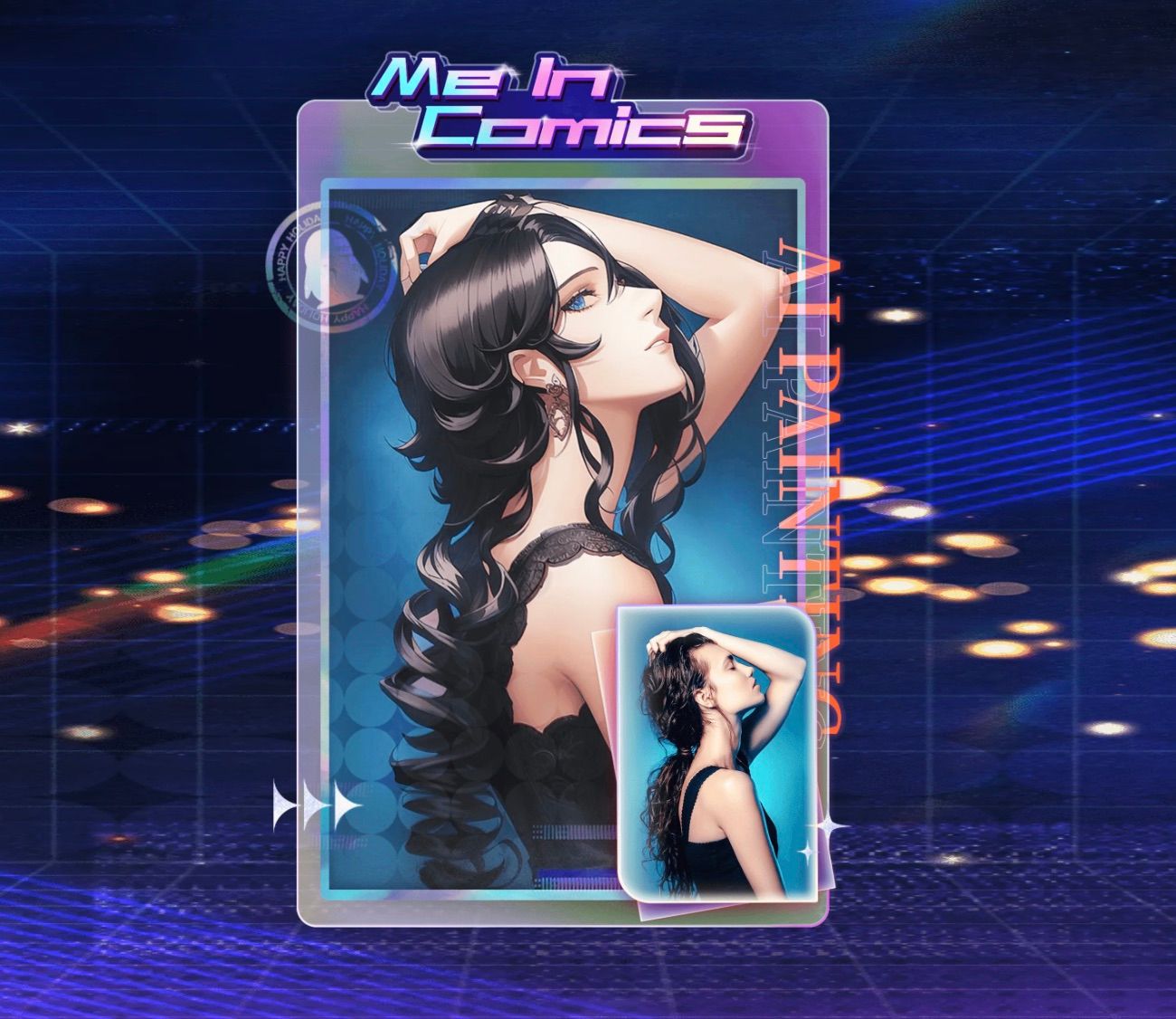
There's some speculation that the underlying AI algorithms used by Different Dimension Me are based on the Stable Diffusion model, which its Chinese developers may have borrowed without openly acknowledging it. But there doesn't seem to be any confirmed information about that one way or the other.
The main advantages of Different Dimension Me are:
- It's completely free to use, with no paid subscriptions or even a requirement to register.
- It's not trying to be a full-fledged alternative to ChatGPT or other general-purpose AI assistants. It's just focused on that one specific task of turning photos into anime-style art.
So while an anime art tool isn't going to replace something as powerful and versatile as ChatGPT, Different Dimension Me can be a useful, simple solution for anyone who needs that particular type of AI functionality. Its lack of restrictions and costs make it an accessible option for that niche use case.
Starry AI
Starry AI is a tool that can create images using a large database of visual data. What makes it different from similar services is that you can use it not just on your computer, but also on your smartphone – there are apps for both iOS and Android.
When you use Starry AI, you get 5 "tokens" per day, which they call Lumens. You spend these Lumens to generate new images. You can also buy more Lumens in packages if you need them.
There are also subscription plans available that give you discounts on Lumens and unlock the full set of features on the Starry AI platform. The cheapest subscription is $1.99 per week.
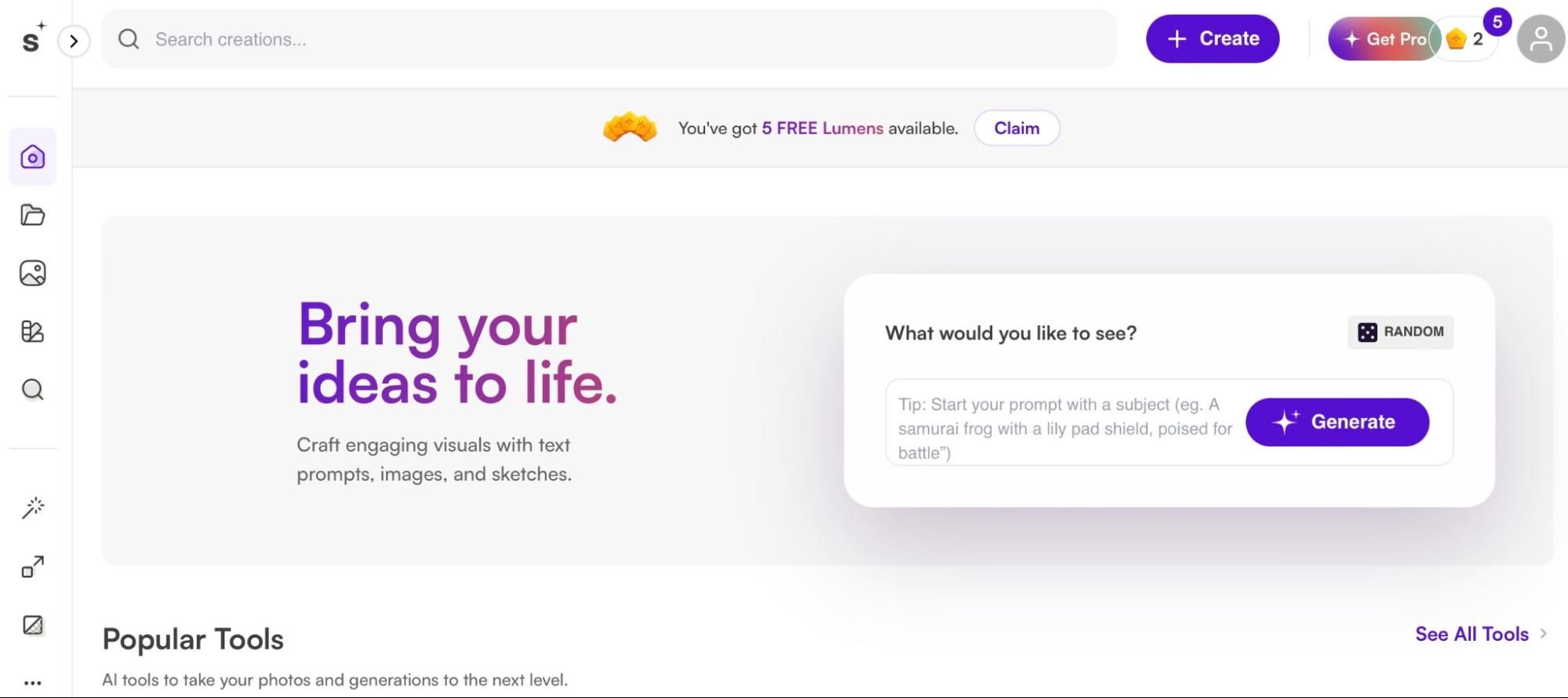
With Starry AI, you can create images in different styles – like art, photography, or illustration. You can also use tools to enhance the quality of the images, make them bigger, or remove the background.
It's worth noting that a lot of these image generation and editing features are also available in the latest version of ChatGPT, the popular AI assistant. So Starry AI has some similar capabilities, but in a more specialized image-focused tool.
Tabnine AI
One of the best alternatives to ChatGPT for coding and programming help is a tool called Tabnine AI. Tabnine is an AI-powered service that can provide users with tips, advice, and other assistance with programming tasks.
The way Tabnine works is that it was trained on a huge database of open-source software code. So you can use Tabnine not just on your own local computer, but also through cloud-based tools and services.
The process is similar to ChatGPT – you give Tabnine a prompt or question, like "How do I connect automatic weather updates to my website?", and the AI will give you guidance on how to implement that.
One of the key benefits of Tabnine is that there's a free trial period – you can use it for free for the first 90 days. After that, there may be paid plans available, but the free trial gives you a chance to try it out first.
Conclusion
These days, there's usually some kind of AI tool available to help with almost any problem that artificial intelligence can be used to solve. And a lot of these solutions are even available for free. That said, ChatGPT is still one of the most capable and functional AI assistants out there, and it's likely to stay that way for a while.
You can use AI to create all kinds of ad creatives, generate ad text, and then promote the ads using the MyBid advertising network. MyBid works in a fully managed system, whereby, after you sign up, you'll get a personal manager who will help you set up, launch, optimize, and scale your advertising campaigns.


